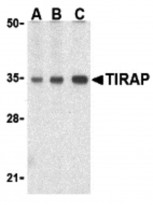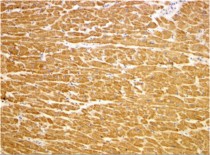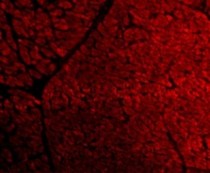ARG55409
anti-TIRAP antibody
anti-TIRAP antibody for IHC-Formalin-fixed paraffin-embedded sections,Western blot and Human
Cell Biology and Cellular Response antibody; Immune System antibody; Signaling Transduction antibody
Overview
| Product Description | Rabbit Polyclonal antibody recognizes TIRAP |
|---|---|
| Tested Reactivity | Hu |
| Predict Reactivity | Ms, Rat |
| Tested Application | IHC-P, WB |
| Specificity | At least three isoforms of TIRAP are know to exist; this antibody detects all three isoforms. |
| Host | Rabbit |
| Clonality | Polyclonal |
| Isotype | IgG |
| Target Name | TIRAP |
| Antigen Species | Mouse |
| Immunogen | Synthetic peptide (15 aa) within the last 50 aa of Mouse TIRAP. |
| Conjugation | Un-conjugated |
| Alternate Names | Toll/interleukin-1 receptor domain-containing adapter protein; C130027E04Rik; TIR domain-containing adapter protein; Adaptor protein Wyatt; MyD88 adapter-like protein; Wyatt; Tlr4ap; AA407980; Mal |
Application Instructions
| Application Suggestion |
|
||||||
|---|---|---|---|---|---|---|---|
| Application Note | * The dilutions indicate recommended starting dilutions and the optimal dilutions or concentrations should be determined by the scientist. | ||||||
| Positive Control | Human Heart Tissue Lysate | ||||||
| Observed Size | ~ 35 kDa |
Properties
| Form | Liquid |
|---|---|
| Purification | Affinity purification with immunogen. |
| Buffer | PBS and 0.02% Sodium azide |
| Preservative | 0.02% Sodium azide |
| Concentration | 1 mg/ml |
| Storage Instruction | For continuous use, store undiluted antibody at 2-8°C for up to a week. For long-term storage, aliquot and store at -20°C or below. Storage in frost free freezers is not recommended. Avoid repeated freeze/thaw cycles. Suggest spin the vial prior to opening. The antibody solution should be gently mixed before use. |
| Note | For laboratory research only, not for drug, diagnostic or other use. |
Bioinformation
| Database Links |
Swiss-port # P58753 Human Toll/interleukin-1 receptor domain-containing adapter protein |
|---|---|
| Gene Symbol | Tirap |
| Gene Full Name | toll-interleukin 1 receptor (TIR) domain-containing adaptor protein |
| Background | The innate immune system recognizes microbial pathogens through Toll-like receptors (TLRs), which identify pathogen-associated molecular patterns. Different TLRs recognize different pathogen-associated molecular patterns and all TLRs have a Toll-interleukin 1 receptor (TIR) domain, which is responsible for signal transduction. The protein encoded by this gene is a TIR adaptor protein involved in the TLR4 signaling pathway of the immune system. It activates NF-kappa-B, MAPK1, MAPK3 and JNK, which then results in cytokine secretion and the inflammatory response. Alternative splicing of this gene results in several transcript variants; however, not all variants have been fully described. [provided by RefSeq, Jul 2008] |
| Function | Adapter involved in the TLR2 and TLR4 signaling pathways in the innate immune response. Acts via IRAK2 and TRAF-6, leading to the activation of NF-kappa-B, MAPK1, MAPK3 and JNK, and resulting in cytokine secretion and the inflammatory response (By similarity). Positively regulates the production of TNF-alpha and interleukin-6 (By similarity). [UniProt] |
| Research Area | Cell Biology and Cellular Response antibody; Immune System antibody; Signaling Transduction antibody |
| Calculated MW | 24 kDa |
| PTM | Phosphorylated by IRAK1 and IRAK4. Also phosphorylated by BTK. Polyubiquitinated. Polyubiquitination follows phosphorylation by BTK and leads to TIRAP degradation. |
Images (3) Click the Picture to Zoom In
-
ARG55409 anti-TIRAP antibody WB image
Western blot: Human heart cell lysate stained with ARG55409 anti-TIRAP antibody at (A) 0.5, (B) 1, and (C) 2 µg/ml dilution.
-
ARG55409 anti-TIRAP antibody IHC image
Immunohistochemistry: Human heart tissue stained with ARG55409 anti-TIRAP antibody at 2 µg/ml dilution.
-
ARG55409 anti-TIRAP antibody IHC image
Immunohistochemistry: Human Heart tissue stained with ARG55409 anti-TIRAP antibody at 10 µg/ml dilution.








